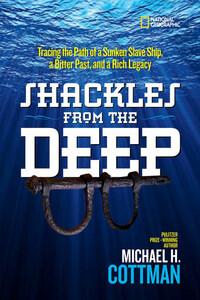Copyright © 2016 National Geographic Partners, LLC
All rights reserved. Reproduction of the whole or any part of the contents without written permission from the publisher is prohibited.
Since 1888, the National Geographic Society has funded more than 12,000 research, exploration, and preservation projects around the world. The Society receives funds from National Geographic Partners, LLC, funded in part by your purchase. A portion of the proceeds from this book supports this vital work. To learn more, visit www.natgeo.com/info.
For more information, please visit www.nationalgeographic.com, call 1-800-647-5463, or write to the following address:
National Geographic Partners
1145 17th Street N.W.
Washington, D.C. 20036-4688 U.S.A.
Visit us online at www.nationalgeographic.com/books
For librarians and teachers: www.ngchildrensbooks.org
National Geographic supports K–12 educators with ELA Common Core Resources. Visit natgeoed.org/commoncore for more information.
More for kids from National Geographic: kids.nationalgeographic.com
For rights or permissions inquiries, please contact National Geographic Books Subsidiary Rights: ngbookrights@ngs.org
NATIONAL GEOGRAPHIC and Yellow Border Design are trademarks of the National Geographic Society, used under license.
Art directed by Callie Broaddus
Designed by Ruth Ann Thompson
Trade paperback
ISBN: 978-1-4263-2461-1
Reinforced library edition
ISBN: 978-1-4263-2462-8
Ebook ISBN: 978-1-4263-2463-5
v3.1
Version: 2017-07-11
A tiger shark feeds on a dead sperm whale. (Photo Credit p1.1.1)
The radio on the boat crackled to life. David Doubilet and his wife and diving partner, Jennifer Hayes, listened closely. A dead sperm whale had been sighted off the reef of Cairns in Australia. This was rare. There had not been a sperm whale carcass sighting in 30 years. Ten large tiger sharks were feeding on the whale. David knew they had to photograph it.
It’s unusual to see sharks feeding in the wild. Sometimes sharks are hand-fed during tours so tourists can dive and see them. David and Jennifer knew that this natural feeding would be a special opportunity.
They set the boat’s coordinates (sounds like co-ORE-din-its) to where the whale had been spotted, and sped along the water as fast as they could. Yet when they arrived at their destination, there was no whale to be seen. The wind and tide had moved it, but where?
David and Jennifer scanned the water. Finally, they saw a large mass floating on the ocean’s surface. They breathed a sigh of relief. It was the whale.
The whale’s white flesh was oozing whale oil. The strong smell filled the air. And eight large tiger sharks circled the carcass. It was time for David and Jennifer to get a closer look.
David and Jennifer slipped into the water. From there, they had a much better view. The sharks’ teeth ripped into the whale’s body, tearing it to shreds. David and Jennifer raised their cameras and began taking pictures.
Did You Know?
Sharks are ancient animals. The first one lived on Earth about 400–450 million years ago.
They knew that as long as they kept their distance from the sharks, they’d be safe. After all, the sharks were busy eating the whale. But they had taken some precautions (sounds like pree-COSH-ens), just in case. Both were wearing full diving gear. “We always wear full wet suits, including gloves that cover our hands,” said Jennifer. “Our bare hands look a lot like dead fish and may be tempting to a shark used to seeing dead fish as food.” They also had their cameras. In some ways, those big cameras helped the team feel safer. It was like having an extra layer of protection between them and the sharks.
So, David and Jennifer focused on shooting pictures. The sharks focused on their meal. In fact, the sharks didn’t seem to notice David and Jennifer at all.
But as they kept taking pictures, David and Jennifer didn’t realize they were getting closer and closer to the tiger sharks and their carcass. The sharks noticed, though. Suddenly, the mood changed. The sharks were interested in the two humans bobbing in the water.
David and Jennifer looked around. They had somehow drifted too close to the whale. Now, the sharks saw them as a threat. Finding food in the ocean can be hard, and sharks will protect their meal. David and Jennifer weren’t safe anymore.
The sharks began to circle. They swam close enough to bump into David and Jennifer. That’s when the photographers thought about their “extra layer of protection.” They held their cameras in front of them to block the sharks.














